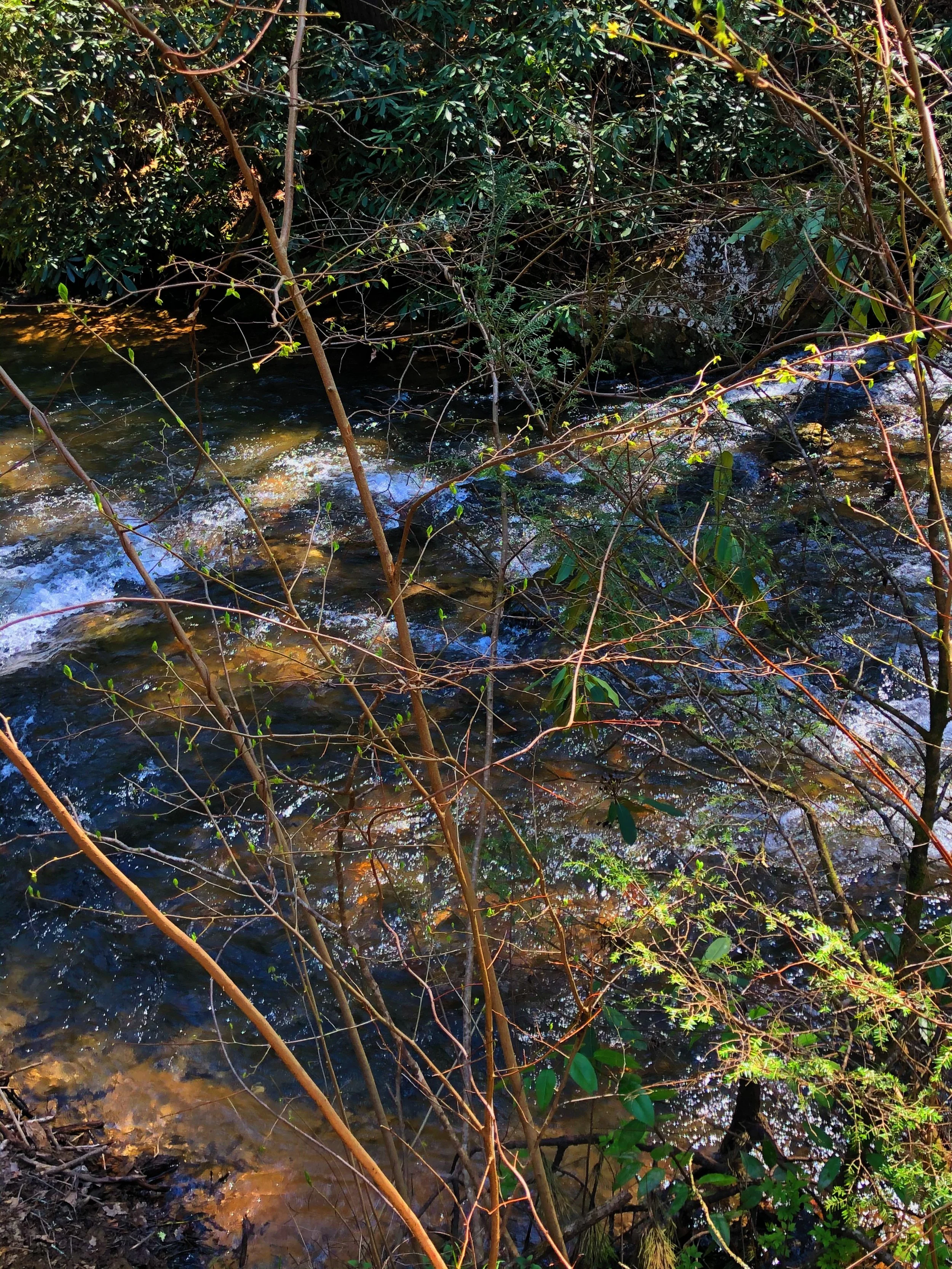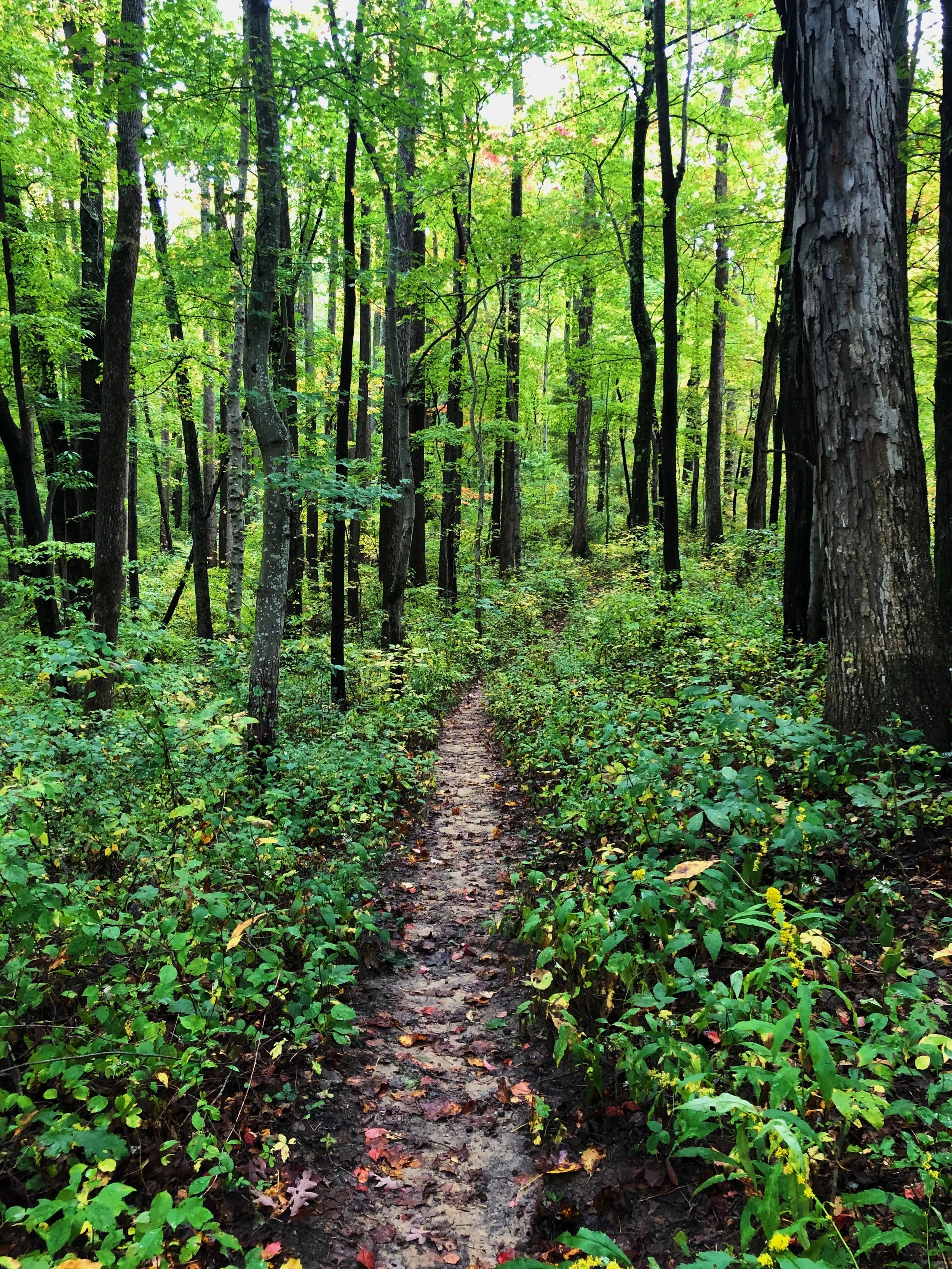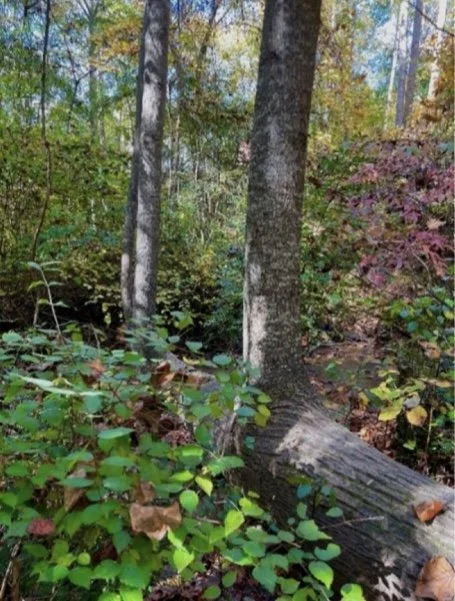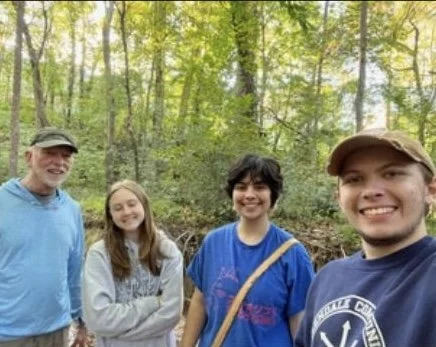My first profile piece in Feature Writing connected me with amazing environmental stewards in Chapel Hill. I grew close with John and his young team, discovering that feature writing was a journalistic passion I wanted to continue doing.
The Stream Team 2.0: Introducing Chapel Hill’s Newest Water Quality Monitors
Published on Nov. 1, 2023
CHAPEL HILL, N.C. — John Christian sits on a hammock in a small park, waiting for me. He hasn’t quite noticed I’m walking up yet, and his eyes are closed, facing upwards towards the sun. He has a faint smile, perking his stark white beard up a bit.
When he begins to sense my presence, his gaze snaps open, and he turns towards me. This time, his smile is not faint, but big and radiant. Teeth and all.
We greet each other, his palm outstretched for mine. I accept, noticing that his hands are rough and calloused. This must be from the years of hunting and fishing he’s talked so much about.
We begin our journey into the woods surrounding the Fan Branch Creek in the Southern Village development of Chapel Hill. As Christian leads the way, he tells me the developer, D. R. Bryan, advocated and planned to keep as much natural area as possible. Bryan was one of the first developers Christian had ever heard about, who planned for connected communities and mixed-use neighborhoods.
This, he says, gesturing to the beautiful fall foliage over a trickling creek, was the reason he chose to live here when moving from Minnesota. The creek was about 2-feet wide and very shallow at this part. The water was clear, though, and we could see the sandy bottom and larger rocks scattered about.
The sand, Christian says, is what he calls Chapel Hill’s specialty dirt. It’s what the town uses in any new development, like the base of a playground. Over the years, storms have carried the sand to the stream, making it the new and permanent creek bottom.
We continue downstream to another spot that features a deeper part of the creek and one of his favorite trees. From a few feet away, I can see that a huge tree fell years ago, but as I walk closer, I can see that three trunks have grown out of the bigger parent tree.
It’s an amazing site, and Christian’s favorite part of these woods because it shows how adaptive Mother Nature can be: One thing may fall and die, but three more even greater things can come from it.
We decided to continue our journey downstream, with the creek to our left. Christian says we are still at the smallest part of the creek and that it only gets bigger from here. Especially when it meets Morgan Creek, a few miles up from where we are.
After a couple of stops, we finally reach the reason we’re both out here: The site where Christian and three others gathered data for the Stream Team, a Chapel Hill program that uses community members to monitor water quality in creeks and streams.
From Education to Data Collection
The ninth Stream Team group is made up of Christian, two high school freshmen, Susanna and Addison, and a community college student, Spencer.
This is not Christian’s first time doing this sort of work, though. He was part of the first monitoring group designed by Wendy Smith, the former outreach coordinator for stormwater management. This first installment was aimed at guiding and educating community members, who collected very basic water samples that were used only for educational purposes.
But, with Christian’s years working for the Environmental Protection Agency in the fish and wildlife departments, he was hoping for the opportunity to do field work, which he missed out on with his time at the EPA.
When Smith asked volunteers their biggest critique of the program, Christian told her he hoped the next data collected would go towards tracking water health. Hopefully, it can help determine how to help the watershed or ecosystems if a problem is found.
After the coronavirus pandemic, Sammy Bauer, the newest outreach coordinator, and their intern, Morgan Flynt, sat down to do just that. For about a year, they worked to develop and update the program, which included criticisms and increased access for potential volunteers.
The outreach team came up with a data collection program that will go towards an interactive water health tracking system that will be uploaded to the town of Chapel Hill’s website, hopefully by next year.
This system will include maps of all the stream sites, the information collected, and a habitat assessment, and it will provide training materials and information that community members can use outside of the program. Bauer also hopes to include past information in the system so people can see changes in a visual format.
Let’s Get Our Feet Wet!
Back at the Fan Branch Creek site, Christian explains why he and his team chose this site to collect data: This section of the creek has a small waterfall to the left and a collection of large rocks that the water filters through on the right.
The water is moving faster than at other sites we’ve stopped at, and small bubbles are forming to the left and right.
The bubbles, Christian says, are the best thing to see when collecting data since this means the water is moving, being filtered, and getting oxygen.
It’s not just a great site to collect data; the babbling flow of the creek is a small oasis. We listen to its sound, Christian wearing that same smile as earlier, face upward toward the sky.
On our way back to where we started the journey down Fan Branch Creek, Christian reflects on the day he and his group collected the data a couple of weeks ago. It was exactly like today, he says: sunny, warm, and blue skies.
Spencer, who mans the communications, scheduled the time and day everyone would meet and made sure Bauer knew when they would be collecting; Susanna oversaw calibrating and getting the equipment ready; and on the day of the collection, Addison and he got their feet wet collecting the water samples. From the bank of the creek, Spencer and Susanna filled out the worksheet printed out by Bauer and their team.
They found that the water quality in Fan Branch Creek was perfect, and there were no concerns.
Christian says the best part about that day was seeing his group actually work to get the data. He was excited when they asked questions about the science of water, creeks, and wildlife. And very surprised that they were interested in him and his past life as a biologist.
Not Just a Biologist, but a Mentor
The collection day is what Christian says solidified them as a group. He understood where their interests were for water quality and why they were out there with him in the first place.
His team also agreed that he established himself as a mentor that day, even if he refuses to call himself that.
One thing that stuck out to Addison was the respectful way Christian spoke to the group and how natural his lessons were. Addison said he learned so much, but it didn’t feel like he was talking to a teacher at all, as they both were literally standing in a creek for most of the day.
Spencer agrees that he learned a lot, but he also feels like he made a lifelong connection with Christian. Spencer sees himself continuing conservation efforts on a political level in the future, and Christian was able to lend advice and give him contacts in the Washington, D.C area.
Susanna said she enjoyed how inviting he was and how he let them lead the way and take charge of their tasks.
They’re all excited about what the spring data collection will hold, and especially excited for what happens beyond the collection process. Susanna says they are already planning time together even before spring starts.



